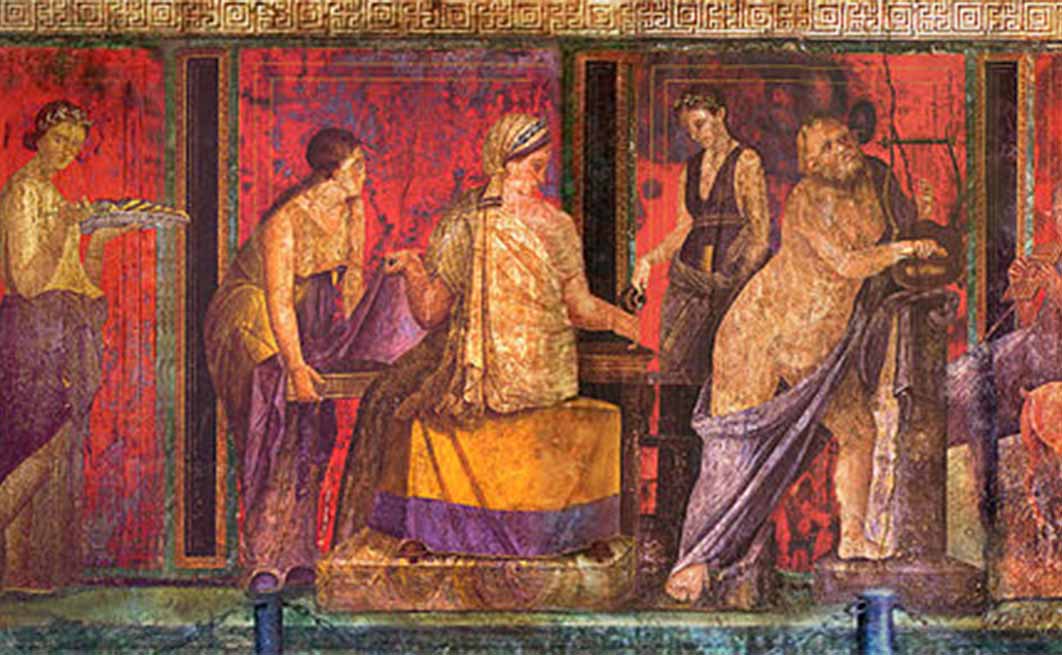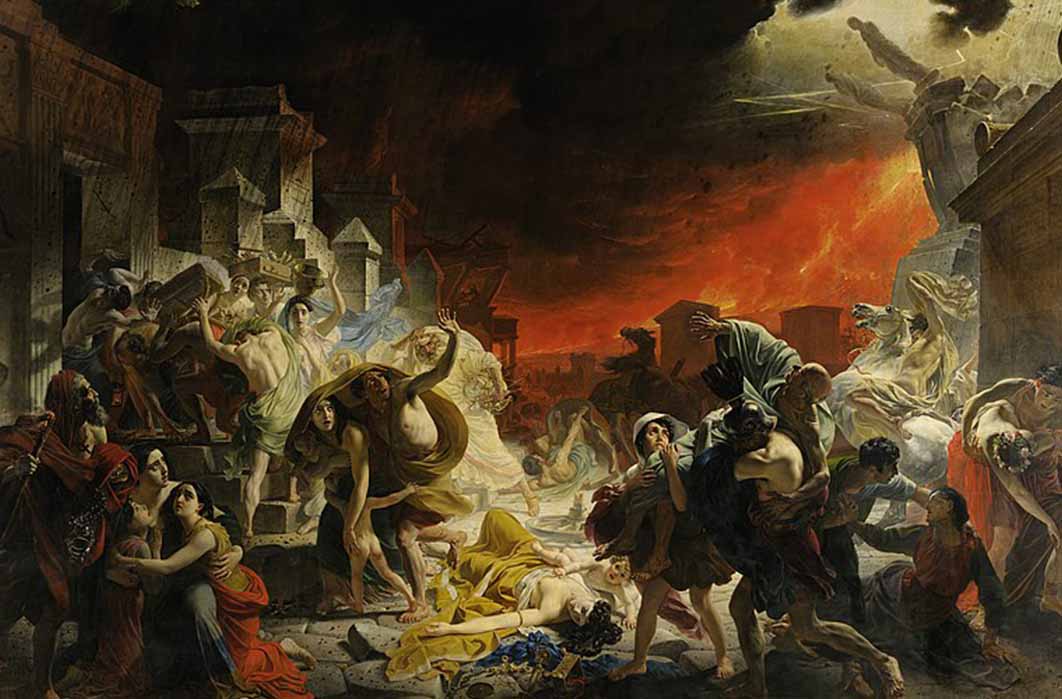
The Perplexity Of The Villa Of Mysteries In Pompeii
The Villa of Mysteries was one of the most luxurious villas unearthed during the 1909-1911 excavations of the ancient Roman city of Pompeii, which was buried in volcanic ash with the eruption of Mount Vesuvius in 79 AD. Miraculously this Roman villa, when uncovered, reappeared almost exactly as it stood more than 2,000 years earlier; even its artwork has survived in surprising condition. The mystery within this ancient villa relates to a particular room where the walls are completely covered with vivid murals of numerous women performing enigmatic interactions. The scenes on the friezes depict images of beautiful women, drunken men, fauns, maenads, winged figures and the ritual flagellation of a young woman. Scholars have determined that these pictorial scenes may illustrate secret ceremonies conducted by a women’s mystery cult. This continuous series of paintings are significant for religious scholars as little is known about secret cultic actions of the past. Even less is known about ancient cults formed by women. The pictorial frieze has often been called the most important and best-preserved artwork from Roman antiquity.
What is the secret behind these religious rituals encoded within the murals of the Villa of the Mysteries? Are they artworks depicting esoteric rituals that were actually performed by women at this ancient Roman estate? Was this the site where new members were interviewed before initiation? Was the owner bragging of her own initiation? What ancient enigmas are still hidden on these walls?

The Last Day of Pompeii by Karl Brullov (1830–1833) (Public Domain)
The Last Day Of Pompeii
The violent eruption of Mount Vesuvius on August 24, 79 AD, deposited a 13- to 20-foot layer of volcanic ash and pumice on Pompeii, entrapping direct evidence of Roman life and preserving everything exactly as it was, fixed permanently in its place. These buried remnants were carbonized and encapsulated within the layers of ash that hardened over time. Because no moisture or air could penetrate the city buried below, many of the houses, artifacts and artworks have survived intact. The scorched remains reveal details of public buildings, furnishings, food, and evidence of daily activities. Uncovering the ancient city exposed a rich source of information on ancient Roman life never before available. The extraordinary state of preservation, made possible by the eruption of Vesuvius, now allows historians to recreate the day-to-day lives of Pompeii’s inhabitants.
The survival of the Villa of the Mysteries and its painted walls allows historians to access arcane information kept secret by the ancient mystery cults as well. Unfortunately, no contemporary writings survive to fully explain these enigmatic frescoed scenes. The practices, purposes and meanings of their secret ceremonies were never revealed.
Pompeii was a flourishing seaport south of Naples and by the first century BC it had become a town where wealthy Romans often had a second home as a place of relaxation away from the noisy, crowded capitol. Pompeii was designed like a typical Roman city covering about 160 acres and surrounded by city walls measuring about two miles (3.2 kilometers). The population at the time of the eruption in 79 AD was about 11,000. The thriving city held numerous temples, several baths, an amphitheater and a large forum. Excavations have also revealed remains of 200 craft workshops, bakeries, tanneries and textile makers. Some of the lavish Pompeian estates functioned also as farms or wineries; many villas had elaborate gardens displaying mosaic-decorated fountains and carved statuary. The paintings on Pompeian walls captured life at the time with great accuracy and realism. The numerous wall frescoes of the large house display animals, birds, flowers, landscape and architecture, as well as mythological gods and people from everyday life.

Destruction of Pompeii and Herculaneum with survivors on the beach by John Martin (1821) (Public Domain)
Date In Dispute
At the time of the last eruption in 79 AD, Pompeii was recovering from another tragedy. In the year 62 AD, a major earthquake shook Pompeii destroying much of the city. Many houses had been renovated, but some were still in disrepair. Then in 79 AD Vesuvius erupted and buried Pompeii again, as well as the nearby city of Herculaneum. Vesuvius’ eruption continued for two days allowing most of the residents to escape. The eruption’s date August 24, 79 AD, was verified by two letters written by Pliny the Younger whose uncle, Pliny the Elder, was the commander of a fleet stationed close to the city’s port. Pliny the Elder was also an important author, historian and natural philosopher. Pliny had been an eyewitness to the devastation, but died while organizing a rescue mission to help those endangered by the ash rain. As his ship lay in the bay, he was asphyxiated by the toxic gases. The death toll of the city is estimated to about 2,000, those unfortunates who could not escape the devastation.




